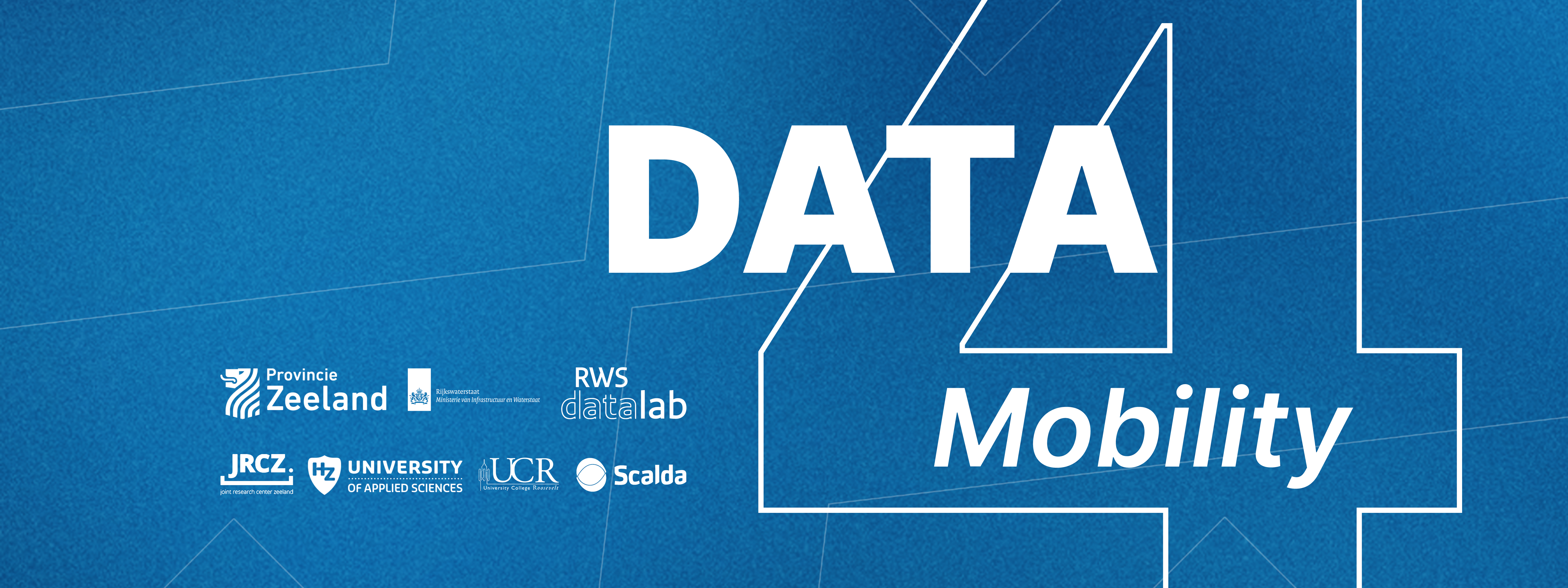
Datasets and challenge
quickly goto: datasets // challenge
Datasets
Download here: https://edu.nl/yfy4r
Extra data: https://edu.nl/hammd
Submit posters, notebooks and other material: Submissions
DataFest for Mobility: The challenge
Introduction
Data Science students from HZ University of Applied Sciences and University
College Roosevelt face new challenges during Datafest 2024. Students will explore
innovative solutions to improve mobility in Zeeland. They will work with various data
sources for incoming and outgoing traffic in the region. The focus is on producing insights
for complex traffic patterns that can help in decision making for among others alternative
routes, positioning public transport hubs. The students are challenged to deliver insights
that help in improving the mobility and flow of traffic in Zeeland.
The situation
The Sloeweg is the main access road to and from the center of Vlissingen and the coast of
Southwest Walcheren. It is a busy road. Several factors contribute to delays for road traffic.
These include bridge openings of the Sloebrug, along with train passages, the traffic light at the A58, and the narrowing of two lanes to one on the road towards the center of
Vlissingen.
The problem
Bridge openings of the Sloebrug lead to traffic jams during peak hours, especially in the
evening rush hour but also in the morning rush hour. These jams are not resolved after one
bridge opening before the next one occurs, sometimes causing congestion all the way back
to the A58, posing a traffic safety risk of rear-end collisions.
The desired situation
Using data can provide better insight into the times when bridge openings cause the most
congestion on the road. This information can be used to further optimize the operating
times in consultation with stakeholders, including those from the shipping industry. If we
know when the Sloebrug will open (prediction), traffic can be informed in advance, allowing for new travel options to avoid getting caught in a bridge opening and saving travel time.
New travel options include:
- leaving earlier or later
- taking alternative routes. Alternative routes include using the N57 for traffic to and from the west side of Walcheren, and the Keersluisbrug for traffic to and from the center of Vlissingen. The latter is currently a fictional option since the municipality of Vlissingen has no concrete plans yet to upgrade the route via the Keersluisbrug to make it a fully viable diversion route. The result is better traffic flow, fewer waiting vehicles (reduced CO2 emissions), increased traffic safety, and more satisfied road users (less waiting for open bridges).
How Can Students Help?
By carrying out the following tasks:
- Investigate when and for how long the Sloebrug is open.
- Predict when the Sloebrug will be open.
- Examine whether Sloebrug openings affect traffic flow on the A58.
- Determine the level of delay compared to normal traffic conditions on the A58 when the Sloebrug is open.
Predict the level of delay determined in question 4.
Addendum to question 4 and 5.
Specifically address the following:
- Examine the 5 minutes before and after the bridge opening. Determine the average
number of cars per minute for both intervals.
o Can we predict the difference between these two values?
o How do you validate that?
o Are 5-minute intervals a good choice?
o Is there a better choice possible?
o Why?
o The previous measurement method is probably not the most meaningful way
to determine delays caused by bridge openings. Can you think of a better
method?